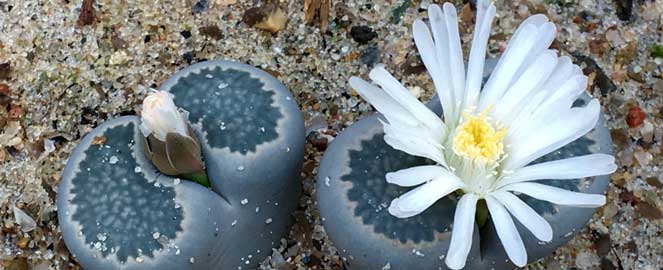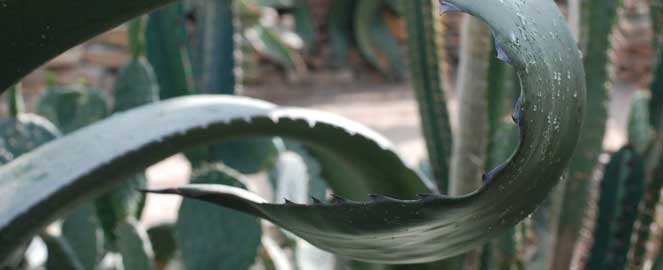THE HOT, DRY DESERTS
Desert plants are adapted to extreme conditions
In the Desert House you can experience plants from subtropical deserts in America and Africa, where the plants are adapted to severe drought. They often have swollen leaves and stems, in which water can be stored when it rains. Many of the plants are covered with a layer of wax that reduces desiccation and thorns that prevent animals from eating them. The plants from Africa and the Americas are similar in growth form, although they have developed independently of each other.

Special circumstances require special adaptations
In the Desert House you can see, for example, that some of the desert plants:
- are covered with a thick layer of white hairs
- are light green, as it reflects the light better
- are frosted blue. This is due to a wax coating that filters out the sun's ultraviolet rays
- have drooping leaves, which make them less exposed to the Sun's rays in the middle of the day and more at the beginning and end of the day, when it is not so hot.
Among the cultured plants, you can experience the Aloe plant, "living stone" and a 45-year-old American agave of impressive dimensions, among many others.
It's all about being able to hold water - and cactus can do that
Listen to the vice-dean at Aarhus University talk about how cacti and succulents are adapted to retain water under extreme conditions.
Deserts are dry areas characterized by the fact that the potential evaporation is much greater than the annual precipitation.
Generally, a hot area is considered a desert if annual precipitation is less than 200 mm and annual evaporation is greater than 2000 mm. The sky is usually clear from sunrise to sunset, and the temperature difference between day and night is very large.
35% of Earth's surface is desert
The drier an area is, the more dispersed the vegetation. In this way, there is a larger area from which each individual plant can absorb water. Plants that grow in the desert often have large, shallow root systems that allow them to quickly absorb water from short rain showers.
More than 35% of the Earth's land surface is covered by desert.

